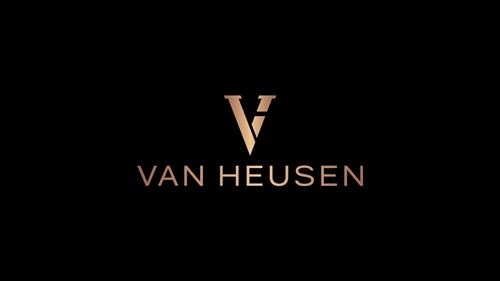Maharashtra, a land of diverse cultures and traditions, is not just famous for its historical forts, vibrant festivals, and delectable cuisine, but also for its rich and colorful folk dances. These dances, performed on various occasions, depict the state’s deep-rooted heritage and social traditions. Whether during religious celebrations, harvest festivals, or community gatherings, dance plays a crucial role in expressing the emotions, beliefs, and history of the people. Let’s take a closer look at the traditional dance forms of Maharashtra.
1. Lavani – The Iconic Folk Dance of Maharashtra
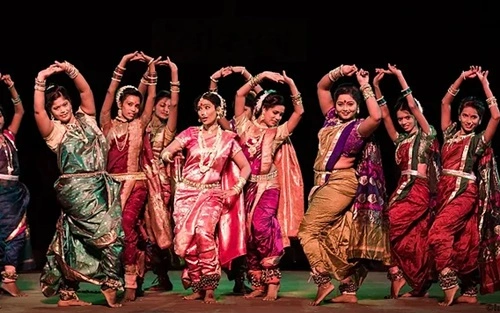
One of the most popular and dynamic dance forms of Maharashtra, Lavani is a blend of powerful rhythm, graceful movements, and expressive storytelling. It is traditionally performed by women in bright, nine-yard sarees (Nauvari) and heavy jewelry, accompanied by the beats of the dholki (a percussion instrument). Lavani has two sub-genres:
- Nirguni Lavani – Philosophical and spiritual themes.
- Shringarik Lavani – Romantic and sensuous, often performed in theatres or Tamasha performances.
Lavani gained prominence during the reign of the Peshwas and remains an integral part of Maharashtra’s folk culture.
2. Tamasha – The Theatrical Dance-Drama
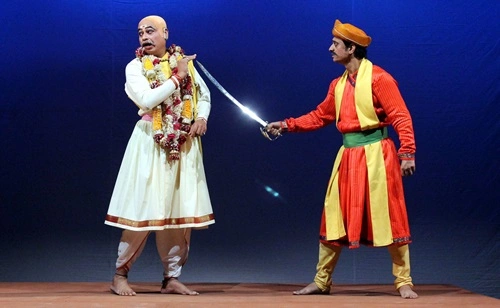
Tamasha is a unique folk theatre and dance form that originated in Maharashtra. It combines music, dance, and drama to entertain audiences, often incorporating social and political satire. Traditionally performed in rural areas, Tamasha features energetic movements, witty dialogues, and spontaneous humor. Kalgi-Tura, a sub-genre of Tamasha, involves poetic duels between performers.
Tamasha is deeply rooted in Marathi literature and folk traditions, and it continues to be a major attraction in cultural festivals across the state.
3. Koli Dance – The Rhythmic Expression of Fishermen
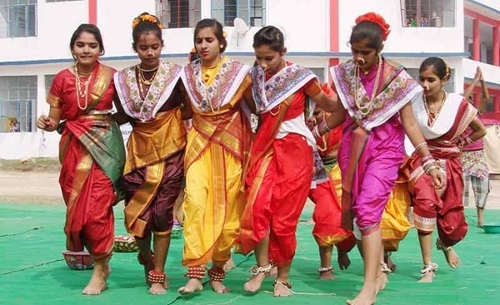
The Koli dance is an essential part of the Koli community, the traditional fisherfolk of Maharashtra. Inspired by their daily lives, this dance depicts the rowing of boats, casting of nets, and the rhythmic movement of waves. The dancers, dressed in colorful attire, form pairs or groups and perform synchronized steps, reflecting their coordination in real-life fishing activities.
The beats of the dhol, along with folk songs narrating their joys and struggles, make Koli dance a vibrant and engaging performance, especially popular during festivals like Narali Purnima.
4. Dhangari Gaja – The Dance of Shepherds
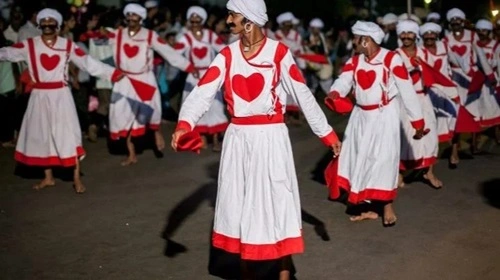
Performed by the Dhangar (shepherd) community of Maharashtra, Dhangari Gaja is a dance dedicated to Lord Biruba, their revered deity. The dancers wear traditional attire with white dhotis, colorful shawls, and turbans. The dance movements are inspired by their nomadic lifestyle, celebrating their gratitude for nature and livestock.
Accompanied by the beats of dhol and tuntuna, Dhangari Gaja is performed with high energy, often during religious gatherings and fairs in rural Maharashtra.
5. Povadas – The Ballads of Warrior Tales
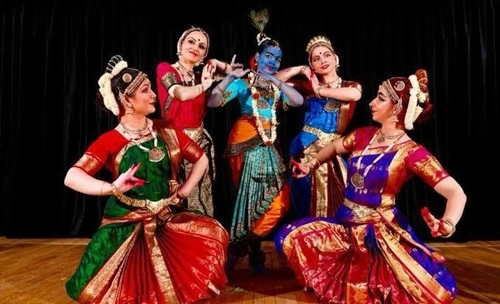
Povadas are dramatic and energetic dance performances that recount the heroic tales of Chhatrapati Shivaji Maharaj and other legendary warriors of Maharashtra. This dance is a unique combination of narrative singing and expressive movements, often performed with swords and shields.
Povadas are an integral part of Maharashtra’s folk theatre, highlighting the valor and patriotism of Maratha warriors. It is often seen during cultural festivals and Shivaji Jayanti celebrations.
6. Dindi – The Spiritual Dance of Devotion
Dindi is a devotional folk dance performed in praise of Lord Vithoba (Vitthal), especially during the famous Pandharpur Wari pilgrimage. The dancers, mostly in white attire with saffron scarves, move rhythmically while singing abhangas (devotional songs) composed by saints like Sant Tukaram and Sant Dnyaneshwar.
This dance form represents spiritual ecstasy, devotion, and unity among the devotees, creating a mesmerizing experience for spectators.
7. Lezim – The Vibrant Group Dance
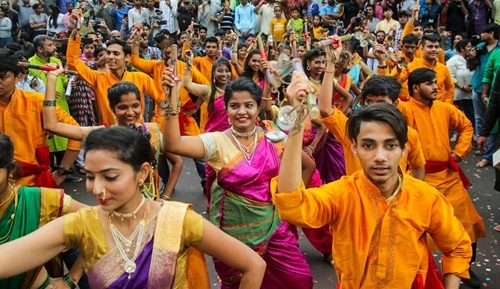
Lezim is an energetic dance performed with small, metallic cymbals called lezim, held by the dancers. The rhythmic jingling of the lezim, combined with synchronized movements and jumps, makes this dance highly engaging.
Lezim is often performed during processions, sports events, and cultural gatherings. It is also used as a physical fitness exercise in schools and military training, given its emphasis on agility and coordination.
8. Gondhal – The Ritualistic Dance
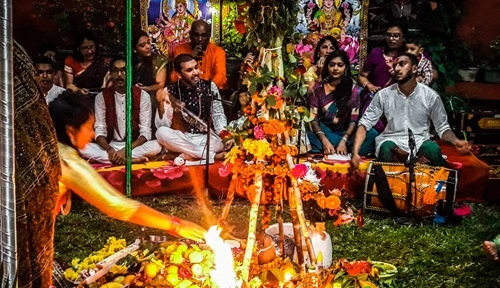
Gondhal is a semi-theatrical dance performed as a ritual offering to deities like Goddess Renuka and Khandoba. It involves both singing and storytelling, accompanied by traditional instruments like the taal (cymbals), sambal (drum), and veena (string instrument).
Gondhal performances are conducted during religious ceremonies, weddings, and festivals to seek blessings and narrate mythological tales in an engaging manner.
9. Bharud – The Philosophical Dance-Drama
Bharud is a folk dance-drama that combines humor, social messages, and religious teachings. Originally created by Sant Eknath, Bharud performances are a mix of song, dance, and moral storytelling, often dealing with themes of righteousness, equality, and social justice.
This dance form is popular in rural Maharashtra and is performed by wandering storytellers known as Warkaris, who spread their messages in a lively, interactive manner.
10. Dashavatar – The Mythological Dance
![]()
Inspired by the ten incarnations of Lord Vishnu, Dashavatar is a traditional folk theatre performed in Konkan and parts of Maharashtra. The dancers, dressed in elaborate costumes and masks, enact mythological stories with dramatic movements and expressions.
This dance form, similar to classical theatre, has been preserved through generations and is performed during religious festivals and temple fairs.
Conclusion
Maharashtra’s traditional dance forms are more than just performances; they are a reflection of the state’s cultural richness, historical legacy, and social fabric. From the sensuous movements of Lavani to the spiritual devotion of Dindi and the warrior tales of Povadas, each dance narrates a unique story. These folk dances continue to thrive and evolve, keeping the essence of Maharashtra’s heritage alive in today’s modern era.
As Maharashtra moves forward, it is essential to preserve and promote these dance forms, ensuring that future generations can appreciate and celebrate the vibrant folk traditions of this culturally rich state. Whether witnessed in villages, on grand festival stages, or even in Bollywood adaptations, the traditional dances of Maharashtra remain an unforgettable spectacle.
